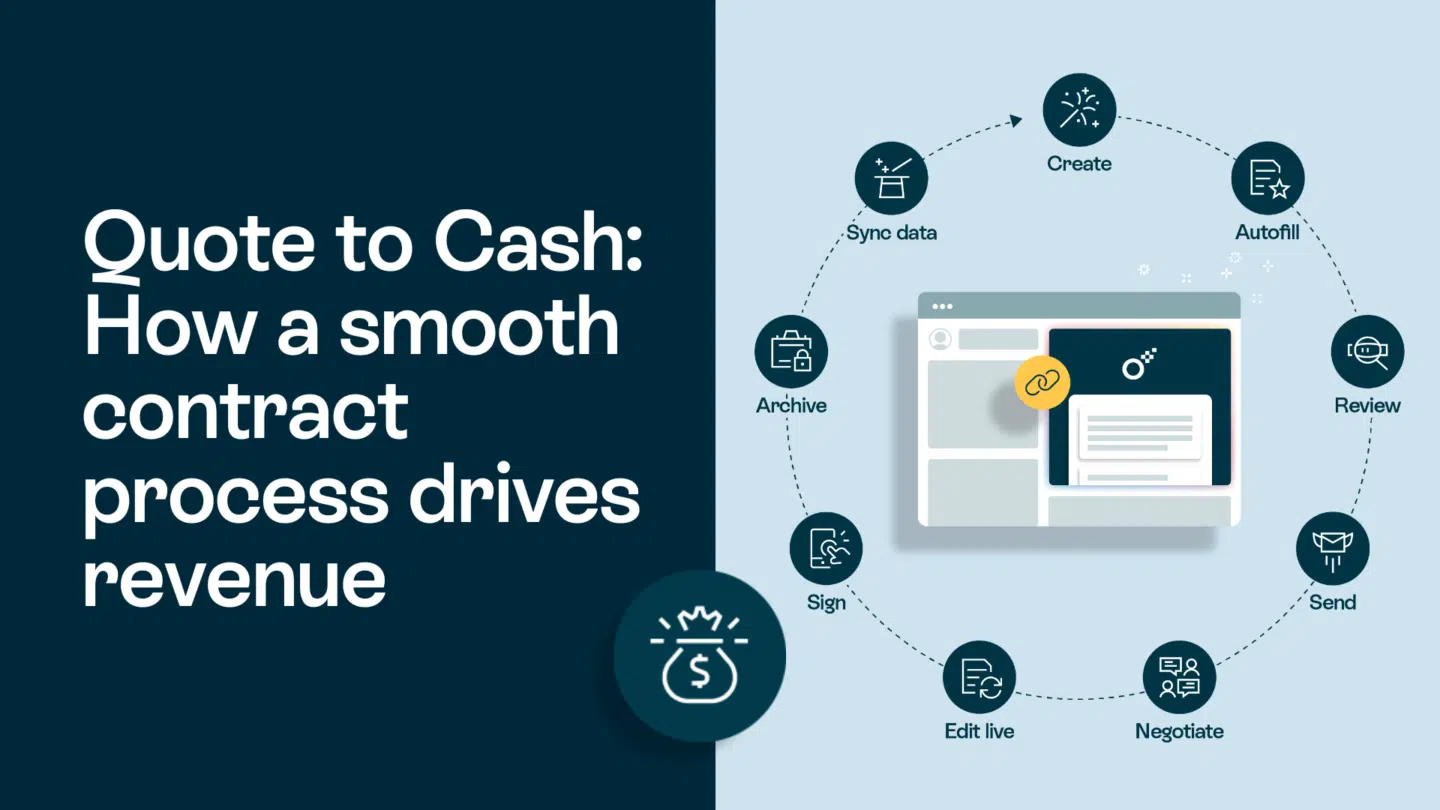Ever felt the pressure of last-minute negotiations, where discounting becomes a desperate attempt to seal the deal, risking both the sale and your profit margins? It’s a tough spot, one many of us have faced. For successful SaaS sales teams, mastering these pivotal moments is non-negotiable. But how do you navigate these high-stakes scenarios effectively?
This guide provides you with the lowdown on all things SaaS contract negotiations from a sales perspective. It’s the insider’s guide to understanding what makes these negotiations tick and, most importantly, how to come out on top.
Let’s get started.
What is a SaaS contract?
A SaaS (Software-as-a-Service) contract governs the relationship between a SaaS vendor and its buyers. This agreement sets the stage, dictating the terms and conditions for both parties involved in the SaaS journey.
Imagine you’re part of a sales team offering top-tier SaaS and CCaaS solutions through a robust CRM product. Let’s say a lead has come to you because they’re aiming to revamp their outdated CRM system. They’ve caught wind of your company’s groundbreaking software and are keen to join the ride.
When it comes to SaaS contract negotiation, you should dive into the specifics, explain in detail how the customer’s employees can access and use the CRM software, and outline the subscription model. Perhaps it’s a monthly or annual subscription plan, whatever is best for your client, right? It might even cover backup protocols, encryption methods, and compliance with data privacy regulations, ensuring your customer’s peace of mind.
Read also: AI-based contract negotiation: The new way to manage your contracts

Why SaaS sales negotiations are important
Contract negotiations in SaaS sales are the key to success. They pave the way for fruitful collaborations and make sure that both parties walk away thrilled to be working together. Here’s why these negotiations are absolutely essential:
Relationship building
Good negotiations aren’t just about sealing a deal. They’re about laying the groundwork for strong, lasting customer relationships. During negotiations, you take the time to understand the client’s business needs and company culture. By aligning your approach with their values, you create a connection beyond the contract, making future collaborations smoother and more amiable.
Tailored solutions
Effective negotiations push you to understand the client’s needs. This isn’t a one-size-fits-all game—it’s about crafting solutions that fit their unique requirements like a glove. For example, if you’re negotiating a software subscription with a healthcare provider and discover that they need specific compliance features tailored to the healthcare industry. With this in mind, your negotiation skills enable you to adapt your offering, ensuring your software complies with industry standards, making it an ideal fit for their needs.
Read also: Top 4 benefits of SaaS contract management

Avoiding future conflicts
Heard the saying “prevention is better than cure”? Well, it holds true in negotiations, too. Smooth negotiations prevent misunderstandings downstream.
When negotiating a contractservice-level agreement with a client, you want to outline the scope of service meticulously, response times, and support expectations. You should detail everything during this negotiation, from what’s covered in the service to how quickly your team will be on the draw for support. If the client throws a curveball, unsure about something like ‘XaaS meaning‘, you can dive right in to explain it thoroughly. By clearing the fog during negotiations, you’re setting the stage for a drama-free journey ahead. No conflicts, no mixed signals, just a solid, smooth-sailing collaboration waiting to happen.
4 game-changing strategies for SaaS contract negotiations
Here are four tactics that can transform your SaaS contract negotiation game from good to great:
Negotiation strategy #1: Mirroring
SaaS contract negotiations are not just about what you say. It’s about how you say it. Enter mirroring, the strategy of turning sales teams into the best chameleons in a conversation. You’re essentially picking up cues from the other side and reflecting them right back. Maybe they’re using specific buzzwords, phrases, tones, or body language. Are they calm and collected? You match that vibe.
They’re constantly talking about innovation? Talk about how innovative your SaaS product is! It’s not about being a mimic. It’s more like an unspoken language, a way to build a bridge without saying a word. It’s about empathy, making the other side feel heard and understood.
But be cautious; too much mirroring and you might come off as an echo and could even result in your leads thinking you need to be more knowledgeable. So, it’s important to remember that it’s a delicate balance. Mirror your clients just enough to connect with them, but keep your style intact.
Read also: How contract management platform can drive you revenue?

Negotiation strategy #2: Labelling
Labeling is a bit like calling out the unspoken elephant in the negotiation room. The trick is to tune in to your customers’ feelings and speak out those vibes they might not voice.
While mirroring is about mimicking and matching how your leads act, labeling is more like spotlighting any feelings, issues, or ideas you pick up on. For example, you might say, “It seems like you’re most concerned about…” or “It looks like you value…” You’re putting their feelings or intentions into words, showing them you’re on the same wavelength. By acknowledging the other side’s feelings, even if you disagree, you’re saying, “I hear you.” It’s about respect, letting them know their perspective matters.
However, you must be spot on here. Mislabeling can mess things up, cause misunderstandings, or worse, break trust. So, when you’re using labeling in negotiations, it’s all about reading between the lines and shining a light on those unspoken vibes. Nail this, and you’re not just speaking words. You’re speaking volumes about understanding and respect!
Contract Negotiation strategy #3: Anchoring the price
Anchoring the price is like planting your flag in negotiation territory. You’re setting the starting point, and it’s a bit of a mind game.
You kick things off by throwing out a high initial offer. This number sets the scene, shaping how the other side sees the value of what you’re bringing to the table. It’s a strategic move to shape your client’s perception. This high anchor makes your eventual concessions seem like a sweet deal in comparison.
But anchoring is about doing your homework. You’ve got to know your customer inside out. You need to know their budget, pain points, and negotiating style. Armed with data and excellent value propositions, you justify that initial number. Flexibility is key. You can’t cling to that high number like your life depends on it. You’ve got to listen, pivot, and adjust based on their feedback and sales objections.
Read also: Contract lifecycle management: A complete guide

Negotiation strategy #4: Use of social proof
In SaaS contract negotiations, social proof can feel like having a team of supporters cheering you on. And you can use these experiences and accolades of others to bolster your case.
Your game plan is this. When negotiating with vendors, you want to showcase real stories from satisfied customers, industry experts, or influencers, saying, “Hey, these awesome companies vouch for us, and here’s why you should too!”
Bring out the heavy artillery. That could be case studies, glowing reviews, or referrals that scream success. These stories show how your solution has been a saving grace for others facing similar challenges. It’s about showing, not just telling.
Now, here’s something important to remember, though. Social proof isn’t a one-size-fits-all strategy. It’s all about precision. You’ve got to handpick the evidence that directly speaks to your customer’s goals and hurdles. You’ll miss the mark if you’re too generic or vague; these claims won’t cut it. So be specific and relevant here.
Key takeaways
By now, you’re armed with the lowdown on what SaaS contracts are all about and why they’re the heartbeat of solid business relationships. Plus, you’ve got some compelling tactics up your sleeve to rock your next SaaS contract negotiation.
Remember, negotiations go way beyond a signature on a contract. They’re about forging connections that last. Crafting solutions, sidestepping future conflicts, and building relationships that outlast the paperwork—now that’s where the real magic happens.
So, armed with these tactics, turn negotiations from nerve-wracking moments into pathways for incredible collaborations.







